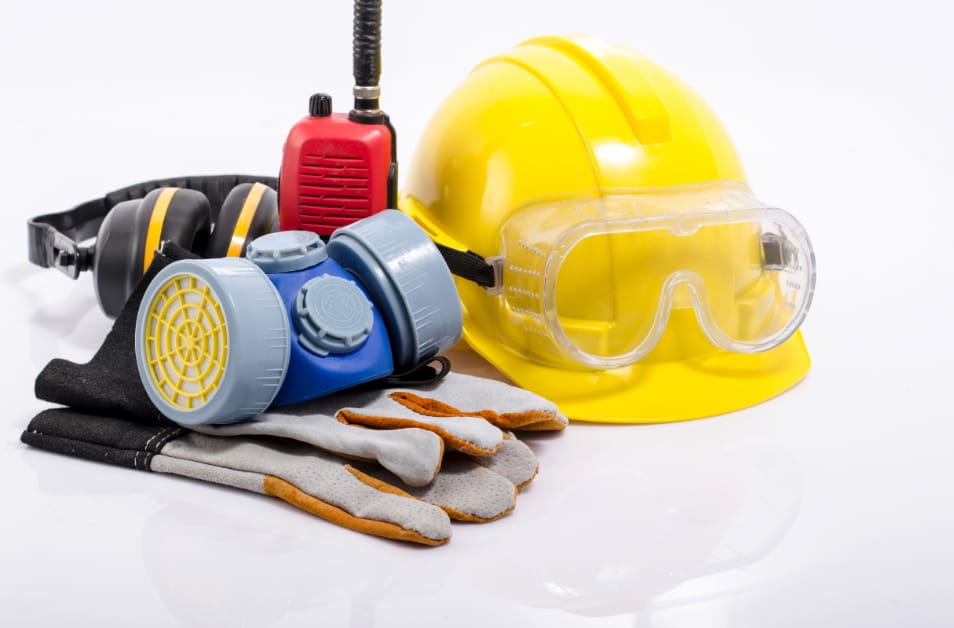Workplace safety is a top priority for any business, and protecting employees from potential hazards is a key aspect of maintaining a safe work environment. One of the most effective ways to ensure safety is through the use of personal protective equipment (PPE).
PPE serves as a critical line of defence against various workplace risks, helping to prevent injuries and protect the well-being of workers. In this guide, we’ll explore the basics of PPE, how to select the right equipment for your industry, and best practices for its implementation.
Understanding the Basics of Personal Protective Equipment (PPE)
What Is Personal Protective Equipment?
Personal protective equipment, commonly known as PPE, refers to a broad range of gear designed to protect workers from potential hazards. This equipment is essential in minimizing exposure to injuries or illnesses caused by contact with chemical, physical, electrical, or biological dangers.
PPE includes items such as helmets, gloves, goggles, respirators, and protective clothing. Each piece of equipment serves a specific purpose, ensuring that employees are shielded from the unique risks present in their work environment.
Key Categories of PPE
PPE can be categorized into several key types, each designed to protect different parts of the body:
- Head Protection: Helmets and hard hats protect against impact injuries from falling objects.
- Eye and Face Protection: Goggles and face shields prevent damage from flying debris, chemicals, and sparks.
- Respiratory Protection: Masks and respirators protect against inhaling harmful dust, fumes, and vapours.
- Hand Protection: Gloves guard against cuts, burns, and exposure to hazardous substances.
- Body Protection: Protective clothing, such as coveralls and aprons, shields against chemical spills and extreme temperatures.
- Foot Protection: Safety boots and shoes protect from heavy objects, sharp materials, and slippery surfaces.
Understanding these categories helps in selecting the appropriate PPE for various tasks and environments.
Selecting the Right PPE for Your Industry
Assessing Workplace Hazards
Choosing the right PPE starts with a thorough assessment of the hazards in your workplace. This involves identifying potential risks associated with specific tasks, materials, and machinery.
For example, a manufacturing plant may present risks such as flying debris or chemical exposure, while a healthcare facility might require protection against biological hazards. By conducting a comprehensive hazard assessment, you can determine the necessary PPE to safeguard your employees effectively.
Industry-Specific PPE Requirements
Different industries have unique PPE needs based on their specific hazards. Here’s a look at some common requirements:
- Construction: Workers need head protection, eye protection, and hearing protection due to the risk of falling objects, dust, and loud machinery.
- Healthcare: PPE such as gloves, masks, and gowns are essential to protect against infectious diseases.
- Manufacturing: Depending on the processes involved, PPE might include gloves, face shields, and respiratory protection to guard against chemicals and flying particles.
- Chemical Processing: Workers often require full-body protection, including chemical-resistant suits and respirators, to avoid contact with hazardous substances.
Selecting PPE that meets the specific demands of your industry ensures that employees are protected from the most relevant risks.
Best Practices for Implementing PPE in the Workplace
Proper Fit and Comfort
The effectiveness of PPE heavily depends on its fit and comfort. Ill-fitting equipment can not only reduce protection but also discourage employees from wearing it consistently.
For example, a hard hat that is too loose may fall off, and gloves that are too tight can limit dexterity. It’s crucial to ensure that PPE is properly sized and adjusted for each worker, allowing them to perform their tasks safely and comfortably.
Training Employees on PPE Use
Even the best PPE is ineffective if not used correctly. Training employees on the proper use, care, and maintenance of their equipment is essential. This training should include demonstrations of how to wear the PPE, explanations of when and where it should be used, and guidance on how to inspect and store the equipment properly.
Regular refresher courses can help reinforce these practices, ensuring that all employees are prepared to use PPE effectively in an emergency.
Maintaining and Replacing PPE
Regular Inspection and Maintenance
To ensure PPE remains in good condition, regular inspections are a must. Check for signs of wear and tear, such as cracks, tears, or discolouration, which can indicate that the equipment is no longer providing adequate protection. Additionally, ensure that items like respirators are cleaned and sanitized regularly to prevent contamination.
Knowing When to Replace PPE
PPE has a limited lifespan, and knowing when to replace it is vital for continued safety. Indicators that PPE needs to be replaced include visible damage, a drop in performance (such as reduced visibility through a face shield), or expiration dates on items like respirators. Regularly scheduled replacements, along with emergency replacements when damage occurs, help maintain a high level of protection for your workforce.
Conclusion
Personal protective equipment is an essential component of workplace safety, protecting employees from the various hazards they may encounter on the job.
By understanding the different types of PPE, assessing the specific needs of your industry, and implementing best practices for its use and maintenance, you can ensure that your workplace remains safe and compliant. To learn more about selecting and maintaining the right personal protective equipment for your business, visit our detailed guide.
